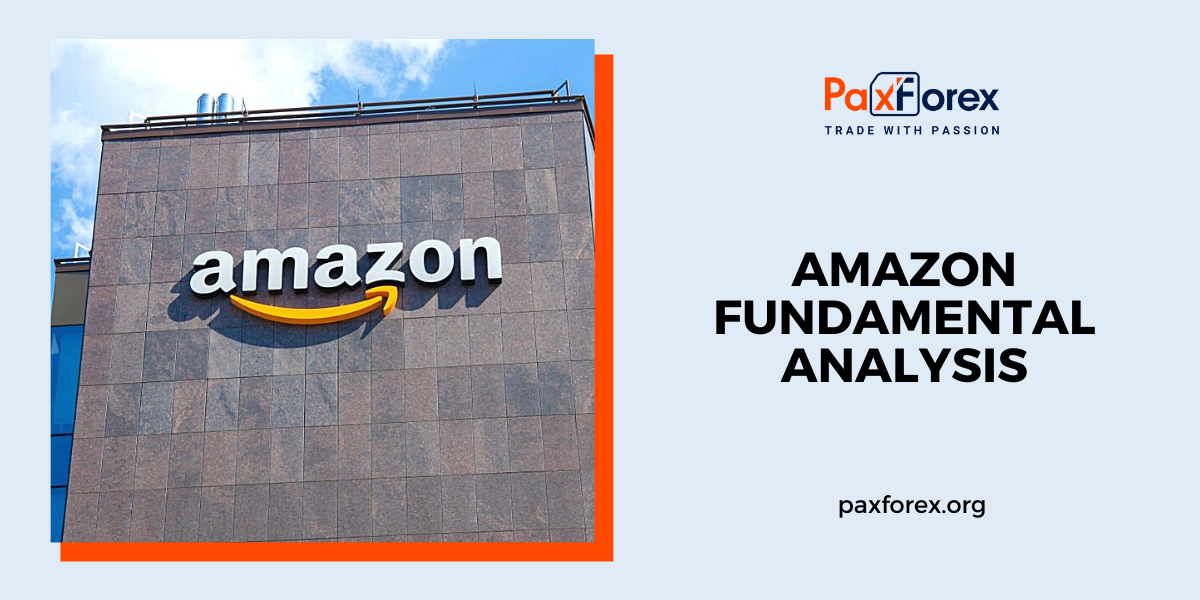
Source: PaxForex Premium Analytics Portal, Fundamental Insight
Few companies have made more of an impact on consumers' daily lives over the past two decades than Amazon. The company has gone from an online bookstore to a one-stop store for just about anything. Before Amazon Prime, two-day shipping was affluence no one realized they needed. Right now it's hard to imagine life without it.
Amazon has expanded far beyond its original e-commerce business. It has an Amazon Web Services (AWS) cloud infrastructure business, an entertainment division, and many hardware brands. With all this expansion, investors may be wondering if Amazon has room left to evolve at a pace that will continue to generate huge stock returns. Amazon's previous earnings report gives investors a clear understanding of whether now is a good time to buy.
It doesn't take much critical thinking to see how Amazon's e-commerce business has benefited from coronavirus. Currently, it faces tough comparisons. In the fourth quarter of 2021, sales in North America were up just 9%, and international sales were down 1% year over year. While the two segments were profitable in terms of operating income in last year's quarter, they each lost money in the fourth quarter of 2021.
During the fourth-quarter earnings call, Chief Financial Officer Brian Olsawasky said the company faced a $4 billion expense because of inflationary pressures. He cited rising wages, higher third-party delivery prices, and labor constraints as reasons for the losses. Nevertheless, AMZN also announced a $20 price increase for its Amazon Prime subscription service. With more than 200 million Prime members worldwide, this means a $4 billion increase in Amazon's net revenue.
This is the first time since 2018 that Amazon has increased prices on Prime, so consumers shouldn't be too concerned, especially with add-on services like Amazon Pharmacy or Prime Gaming. The price increases should also conveniently offset inflation-related costs.
Slowing sales growth and losing profitability are two things investors never want to see when evaluating a business. Amazon, however, is taking proactive steps to ensure that these losses do not become permanent.
The segment that is thriving at Amazon is AWS. And AWS performance is the best reason to buy Amazon stock. According to Statista, AWS has a huge 33% share of global cloud infrastructure spending, ahead of second-place Microsoft Azure, which has a 22% share. Buying the market share leader has been a historically successful investment philosophy, especially as businesses continue to innovate and grow.
For the full year, Amazon's AWS sales rose 37% to $62.2 billion (about 13% of Amazon's total revenue). The real blow to AWS is its extraordinary profitability when measured in terms of operating margins.
AWS is a major driver of Amazon's profit and revenue growth. If this business continues to grow and succeed, then the stock will follow suit. Regardless, if AWS loses market share, then Amazon investors may reconsider owning the stock.
The likelihood of that happening is slim. AWS is the most in-demand cloud infrastructure provider, and management will ensure the company maintains its leadership through incentives and innovation. More than 26,000 people attended the AWS conference in person, where more than 115 new services and features were announced, revealing just how critical AWS is to cloud infrastructure.
On March 9, Amazon executives announced a 20-to-1 stock split, effective June 3. While the stock split is mostly cosmetic, it offers some short-term benefits. First, investors who do not have access to fractional shares will be able to buy shares of the company without overloading their portfolios. Also, Amazon could be a candidate for inclusion in the Dow Jones Industrial Average because the index is price-weighted, and stock worth nearly $3,000 would put the index out of balance.
Stock splits are far from a reason to buy - unless the stock was out of reach because of its high price and you have a broker who doesn't offer fractional shares - but it's also not a reason to sell.
Amazon should be evaluated in terms of its price-to-sales ratio, as the company's profitability goes up and down.
Although the price to sales has not reached a recent low, a 3.5 times sales ratio is pretty standard for Amazon stock over the past five years. So investors can rest assured that they are not buying Amazon at an inflated price.
While the e-commerce trend is somewhat worrisome, it is likely a reflection of the lingering consequences of the continuing pandemic and Amazon's response to it. The contrary factor is that AWS shows no signs of slowing down. Amazon's management won't let its dominance and profitability of e-commerce slip, so profits should return to normal within a few years. At a decent valuation, Amazon stock can be bought now - provided it is bought with the thought of holding it for at least three to five years to give it time to grow.
As long as the price is above 3185.00, follow the recommendations below:
- Time frame: D1
- Recommendation: long position
- Entry point: 3264.00
- Take Profit 1: 3420.00
- Take Profit 2: 3760.00
Alternative scenario:
If the level of 3185.00 is broken-down, follow the recommendations below:
- Time frame: D1
- Recommendation: short position
- Entry point: 3185.00
- Take Profit 1: 2980.00
- Take Profit 2: 2815.00













